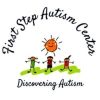Introduction: Autism spectrum disorder (ASD) is a lifelong condition that is typically diagnosed in childhood. However, there is a common question that arises: Can a person who was born neurotypical (without autism) develop autism in adulthood? In this blog, we will explore the possibility of late-onset autism and the factors involved in this intriguing topic. Autism Development in Adulthood.

Understanding Autism Spectrum Disorder:
- Neurodevelopmental Condition: Autism is a neurodevelopmental condition that affects individuals from a young age. It is characterized by differences in social communication, behavior, and sensory processing.
- Early Diagnosis: Most autism diagnoses occur in childhood, as the condition is recognized by observing behavioral and developmental differences in early stages.
The Notion of Late-Onset Autism:
- Challenges in Diagnosis: The idea of late-onset autism presents several challenges. While it is not impossible for someone to receive a new autism diagnosis in adulthood, it is relatively rare.
- Diagnosis vs. Unrecognized Traits: In some cases, adults who receive autism diagnoses later in life may have exhibited traits consistent with autism throughout their lives, but the condition was unrecognized or misdiagnosed.
Late-Onset Autism or Co-occurring Conditions:
- Co-occurring Conditions: In some cases, adults may experience changes in behavior or mental health conditions that are not indicative of autism but may share some symptoms. These conditions can be confused with autism.
- Symptoms and Stressors: Changes in life circumstances, stressors, or other factors may lead to the manifestation of behaviors that resemble autism but are related to other causes.
Exploring Possible Scenarios:
- Stress-Related Symptoms: Some adults may exhibit behaviors associated with autism due to stress, sensory sensitivities, or mental health challenges. These behaviors may resolve when the underlying stressor is addressed.
- Late Recognition: A person who has exhibited traits of autism but was not diagnosed in childhood may receive a late diagnosis when seeking support or understanding for their unique experiences.
- Co-occurring Conditions: Co-occurring mental health conditions, such as social anxiety, can lead to behaviors that are similar to autism traits but are distinct from autism itself.
Conclusion:
While it is relatively rare for an individual who was born neurotypical to develop autism in adulthood, it is essential to approach this topic with sensitivity and an understanding of the complex factors involved. Late-onset autism can occur in some cases, but it is often associated with underlying causes, co-occurring conditions, or previously unrecognized traits.
The key is to seek professional assessment and support when there are concerns about behavioral changes or developmental differences. Diagnosing and understanding the factors contributing to late-onset autism or related conditions can help individuals access appropriate resources and support to enhance their well-being and quality of life. Autism Development in Adulthood.

